Themed collection 2D Materials: Explorations Beyond Graphene

Two-dimensional transition metal dichalcogenide-based counter electrodes for dye-sensitized solar cells
Dye-sensitized solar cell using counter electrode based on transition metal dichalcogenides.
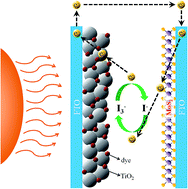
RSC Adv., 2017,7, 28234-28290
https://doi.org/10.1039/C7RA03599C
Thin film transistors based on two dimensional graphene and graphene/semiconductor heterojunctions
During the past few years, two-dimensional (2D) layered materials have emerged as the most fundamental building blocks of a wide variety of optoelectronic devices.
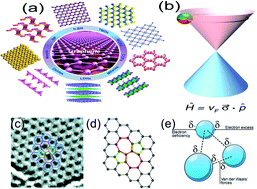
RSC Adv., 2017,7, 17387-17397
https://doi.org/10.1039/C6RA27674A
Graphene, hexagonal boron nitride, and their heterostructures: properties and applications
In recent years, two-dimensional atomic-level thickness crystal materials have attracted widespread interest such as graphene, hexagonal boron nitride (h-BN), silicene, germanium, black phosphorus (BP), transition metal sulfides and so on.
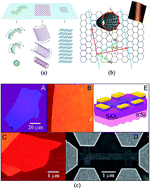
RSC Adv., 2017,7, 16801-16822
https://doi.org/10.1039/C7RA00260B
Adsorption of pure SO2 on nanoscaled graphene oxide
Carbon materials are widely used for adsorptive removal of corrosive or green-house gases like SO2 or CO2. Graphene oxide is accessible in bulk quantities and thus may represent a viable replacement for other nanostructured carbon materials.
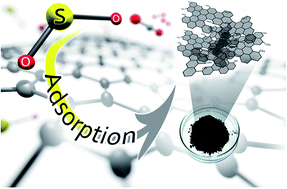
RSC Adv., 2016,6, 36834-36839
https://doi.org/10.1039/C6RA07518E
Tunable Dirac cones in two-dimensional covalent organic materials: C2N6S3 and its analogs
C2N6S3 sustains a biaxial tensile strain up to 24% and its Fermi velocity can be tuned by biaxial strain.
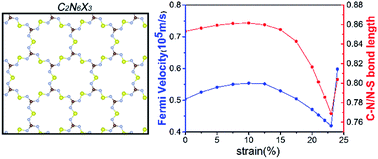
RSC Adv., 2017,7, 52065-52070
https://doi.org/10.1039/C7RA10950D
Surfactant-exfoliated 2D molybdenum disulphide (2D-MoS2): the role of surfactant upon the hydrogen evolution reaction
The surfactant (sodium cholate) when used in the liquid exfoliation of 2D-MoS2 has a detrimental effect upon its electrocatalytic activity compared to pristine 2D-MoS2 (produced without a surfactant).

RSC Adv., 2017,7, 36208-36213
https://doi.org/10.1039/C7RA05085B
2D material integrated macroporous electrodes for Li-ion batteries
One-step synthesized graphene covered three-dimensionally structured architectures are found to be able current collectors in improving the performance of electrodes used in Li ion battery systems.

RSC Adv., 2017,7, 32737-32742
https://doi.org/10.1039/C7RA05354A
Bose–Einstein oscillators and the excitation mechanism of free excitons in 2D layered organic–inorganic perovskites
Bose–Einstein oscillators contribute to the anomalous temperature variation of the free-exciton emission energy in 2D layered CH3(CH2)3NH3PbI4 perovskite, in which coherent two-photon absorption results in the two-photon photoluminescence.
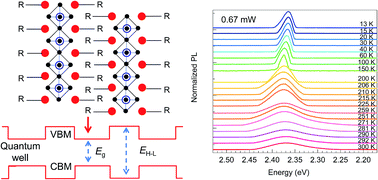
RSC Adv., 2017,7, 18366-18373
https://doi.org/10.1039/C7RA02308A
Different-sized black phosphorus nanosheets with good cytocompatibility and high photothermal performance
As a new kind of two-dimensional (2D) material, black phosphorus (BP) has attracted explosive interest in biomedical applications.

RSC Adv., 2017,7, 14618-14624
https://doi.org/10.1039/C7RA00160F
Free-standing Ti3C2Tx electrode with ultrahigh volumetric capacitance
The flexible and free-standing paper electrode with ultrahigh volumetric performance and outstanding stability was prepared based on the layered 2D Ti3C2Tx, which demonstrates the potential applications in small-sized electronic devices.
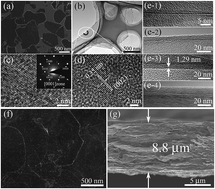
RSC Adv., 2017,7, 11998-12005
https://doi.org/10.1039/C7RA00126F
First-principles investigation of the Schottky contact for the two-dimensional MoS2 and graphene heterostructure
The electronic properties of an MoS2 and graphene heterostructure are investigated by density functional calculations.
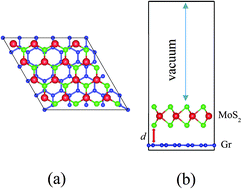
RSC Adv., 2016,6, 60271-60276
https://doi.org/10.1039/C6RA12812B
Designing rGO/MoS2 hybrid nanostructures for photocatalytic applications
Graphene and MoS2, with their structural and morphological compatibility, can be well integrated to make new hybrid materials with enhanced catalytic properties, including the photodegradation of organic pollutants.
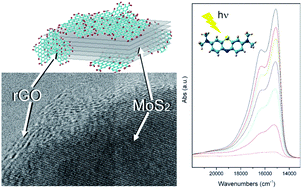
RSC Adv., 2016,6, 59001-59008
https://doi.org/10.1039/C6RA08633K
MoS2 quantum dot decorated g-C3N4 composite photocatalyst with enhanced hydrogen evolution performance
We constructed a MoS2 quantum dots (QDs) decorated g-C3N4 composite photocatalyst via a simple impregnation method for H2 evolution.
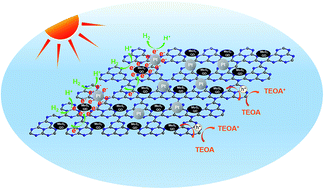
RSC Adv., 2016,6, 52611-52619
https://doi.org/10.1039/C6RA07060D
Heptazine-based graphitic carbon nitride as an effective hydrogen purification membrane
A graphitic C3N4 nanosheet with well-ordered sized intrinsic vacancies provides a natural porous diffusion pathway to separate H2 from common gases.
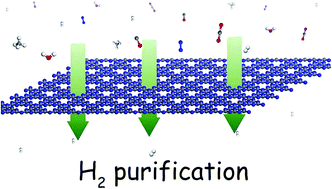
RSC Adv., 2016,6, 52377-52383
https://doi.org/10.1039/C6RA06425F
Boron nitride@graphene oxide hybrids for epoxy composites with enhanced thermal conductivity
Boron nitride/graphene oxide hybrids prepared by an electrostatic self-assembly strategy were used as fillers for epoxy composites with high thermal conductivity.

RSC Adv., 2016,6, 35847-35854
https://doi.org/10.1039/C5RA27315C
Cellulose/boron nitride core–shell microbeads providing high thermal conductivity for thermally conductive composite sheets
Formation of a thermal conductive network in resin sheet hybridized cellulose/BN core–shell microbeads.
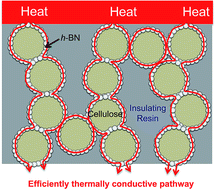
RSC Adv., 2016,6, 33036-33042
https://doi.org/10.1039/C6RA02950G
Structure and electronic properties of C2N/graphene predicted by first-principles calculations
Graphene band gap opening is achieved when integrated with C2N. C2N/graphene heterostructures are promising materials for FETs and water splitting.
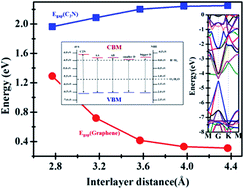
RSC Adv., 2016,6, 28484-28488
https://doi.org/10.1039/C5RA26873G
Fabrication of a polyaniline/MoS2 nanocomposite using self-stabilized dispersion polymerization for supercapacitors with high energy density
A honeycomb-like structured polyaniline/MoS2 nanocomposite has been prepared by self-stabilized dispersion polymerization, which exhibits enhanced electrochemical performances with high electrical conductivity.
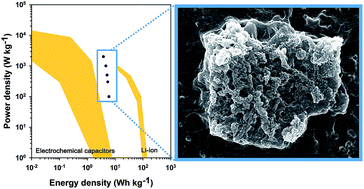
RSC Adv., 2016,6, 27460-27465
https://doi.org/10.1039/C6RA00797J
Investigations on Nb2C monolayer as promising anode material for Li or non-Li ion batteries from first-principles calculations
The metallicity, high capacities, fast diffusion and low average intercalation potentials make Nb2C monolayer a promising LIBs/NLIBs anode.
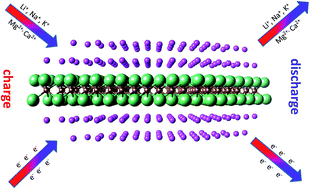
RSC Adv., 2016,6, 27467-27474
https://doi.org/10.1039/C5RA25028E
Tailoring the electrical and photo-electrical properties of a WS2 field effect transistor by selective n-type chemical doping
A doping technique achieved remarkable success in improving the electrical and semiconductor-to-metal transitions characteristics of WS2 FET.

RSC Adv., 2016,6, 24675-24682
https://doi.org/10.1039/C6RA02390H
Preparation and properties of thermally conductive polyimide/boron nitride composites
Hexagonal boron nitride micro particles functionalized by γ-MPS, were used to fabricate PI/BN composites. The thermal conductivity of the composites with 40 wt% m-BN content was increased to 0.748 W m−1 K−1, 4.5 times higher than that of the pure PI.
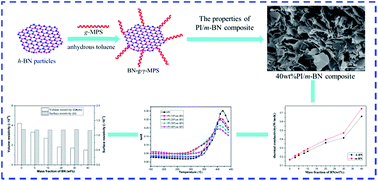
RSC Adv., 2016,6, 18279-18287
https://doi.org/10.1039/C6RA01084A
Electronic and magnetic properties of n-type and p-doped MoS2 monolayers
The electronic and magnetic properties of n- and p-type impurities by means of group V and VII atoms substituting sulfur in a MoS2 monolayer were investigated using first-principles methods based on density functional theory.

RSC Adv., 2016,6, 16772-16778
https://doi.org/10.1039/C5RA27540G
Ni-doped MoS2 nanoparticles as highly active hydrogen evolution electrocatalysts
The replacement of Pt with cheap metal electrocatalysts with high efficiency and superior stability for the hydrogen evolution reaction (HER) remains a great challenge.
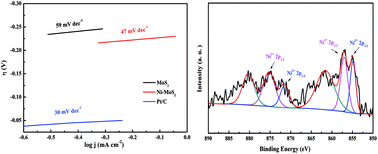
RSC Adv., 2016,6, 16656-16661
https://doi.org/10.1039/C6RA02610A
Fabrication of oriented hBN scaffolds for thermal interface materials
Three dimensional scaffolds of hBN microplatelets prepared by ice templating method are used to fabricate hBN/PDMS composites with vertically aligned hBN for thermal interface materials.

RSC Adv., 2016,6, 16489-16494
https://doi.org/10.1039/C6RA00980H
N- and p-type doping of antimonene
Here, we introduce tetrathiafulvalene and tetracyanoquinodimethane to antimonene, monolayer antimony, as electron and hole dopants to attain n- and p-type semiconductors.
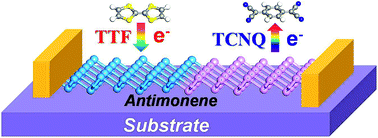
RSC Adv., 2016,6, 14620-14625
https://doi.org/10.1039/C5RA25572D
Equilibrium and kinetic studies on MB adsorption by ultrathin 2D MoS2 nanosheets
MoS2 ultrathin nanosheets display excellent adsorption ability towards methylene blue, with a maximum adsorption capacity of 146.43 mg g−1 in 300 seconds. Moreover, the adsorbent can be resued by washing with deionized water.
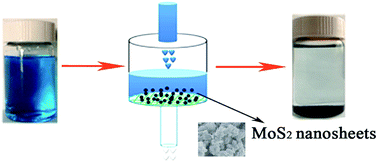
RSC Adv., 2016,6, 11631-11636
https://doi.org/10.1039/C5RA24328A
Tuning the electronic and optical properties of phosphorene by transition-metal and nonmetallic atom co-doping
The electronic and optical properties of phosphorene co-doped with vanadium and non-metallic atoms (B, C, N and O) are investigated by employing first-principles calculations based on density functional theory.

RSC Adv., 2016,6, 10919-10929
https://doi.org/10.1039/C5RA22004A
Facile fabrication of highly porous Co3O4 nanobelts as anode materials for lithium-ion batteries
Highly porous Co3O4 nanobelts were successfully synthesized by using a hydrothermal technique, followed by calcination of the Co(OH)2 precursor.

RSC Adv., 2016,6, 9640-9646
https://doi.org/10.1039/C5RA23835H
Interlayer interaction and related properties of bilayer hexagonal boron nitride: ab initio study
Properties of hexagonal boron nitride bilayer related to interlayer interaction (width and formation energy of dislocations, shear mode frequency, etc.) are estimated by approximation of potential energy surface by first Fourier harmonics.
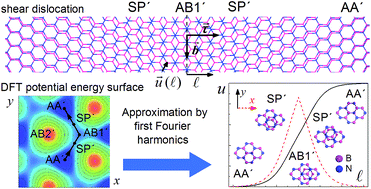
RSC Adv., 2016,6, 6423-6435
https://doi.org/10.1039/C5RA20882C
Thermal conductivity of monolayer MoS2, MoSe2, and WS2: interplay of mass effect, interatomic bonding and anharmonicity
Our work shows that the thermal conductivity κ of MoS2 is largest among the three materials (Fig. a and b) due to largest Debye temperature. WS2 has stronger bonding (Fig. e) and lower anharmonicity (Fig. h), leading to a much larger κ compared to MoSe2.

RSC Adv., 2016,6, 5767-5773
https://doi.org/10.1039/C5RA19747C
Controllable growth of few-layer spiral WS2
Spiral and pyramidal WS2 domains controllably synthesized through chemical vapour deposition technique exhibit interesting optical properties.
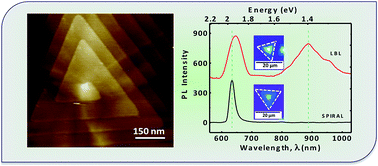
RSC Adv., 2016,6, 376-382
https://doi.org/10.1039/C5RA23020A
One-pot synthesis of nanosheet-assembled hierarchical MoSe2/CoSe2 microcages for the enhanced performance of electrocatalytic hydrogen evolution
Nanosheet-assembled tube-like hierarchical MoSe2/CoSe2 microcages, synthesized via a facile one-pot hydrothermal method, show enhanced HER activity with a much lower onset overpotential, larger cathodic current, and a smaller Tafel slope.

RSC Adv., 2016,6, 23-30
https://doi.org/10.1039/C5RA21638A
Heterogenization of homogenous oxidative desulfurization reaction on graphene-like boron nitride with a peroxomolybdate ionic liquid
Heterogenization of homogenous oxidative desulfurization reaction on graphene-like BN with a novel peroxomolybdate ionic liquid.

RSC Adv., 2016,6, 140-147
https://doi.org/10.1039/C5RA23272D
About this collection
Guest Edited by Professor James D Batteas, Texas A&M University, USA
Since exploding onto the scene, graphene has held the spotlight when it comes to 2D materials, but it is far from the only 2D material of merit, and research has expanded to a range of other materials that have been receiving attention for their ingenious functionality both individually, and as part of composites and heterostructures. The papers in this collection (highlighting work from 2016 and 2017) illustrate the impact that 2D materials and heterostructures can have on fields such as microelectronics, energy generation and storage, environmental pollutant removal, superconductivity, HER, and more, and RSC Advances is proud to be at the forefront to share this information with its readers.